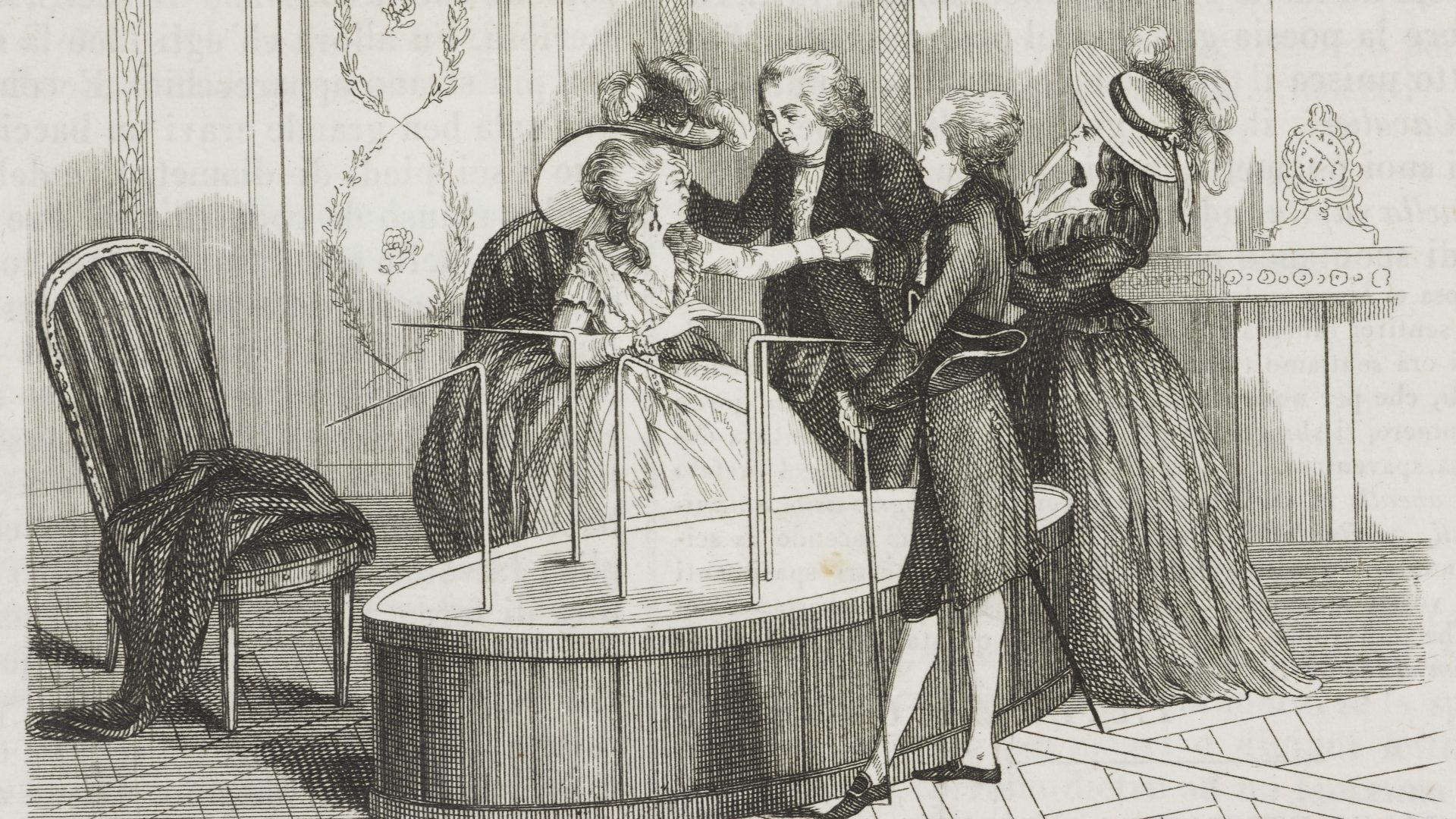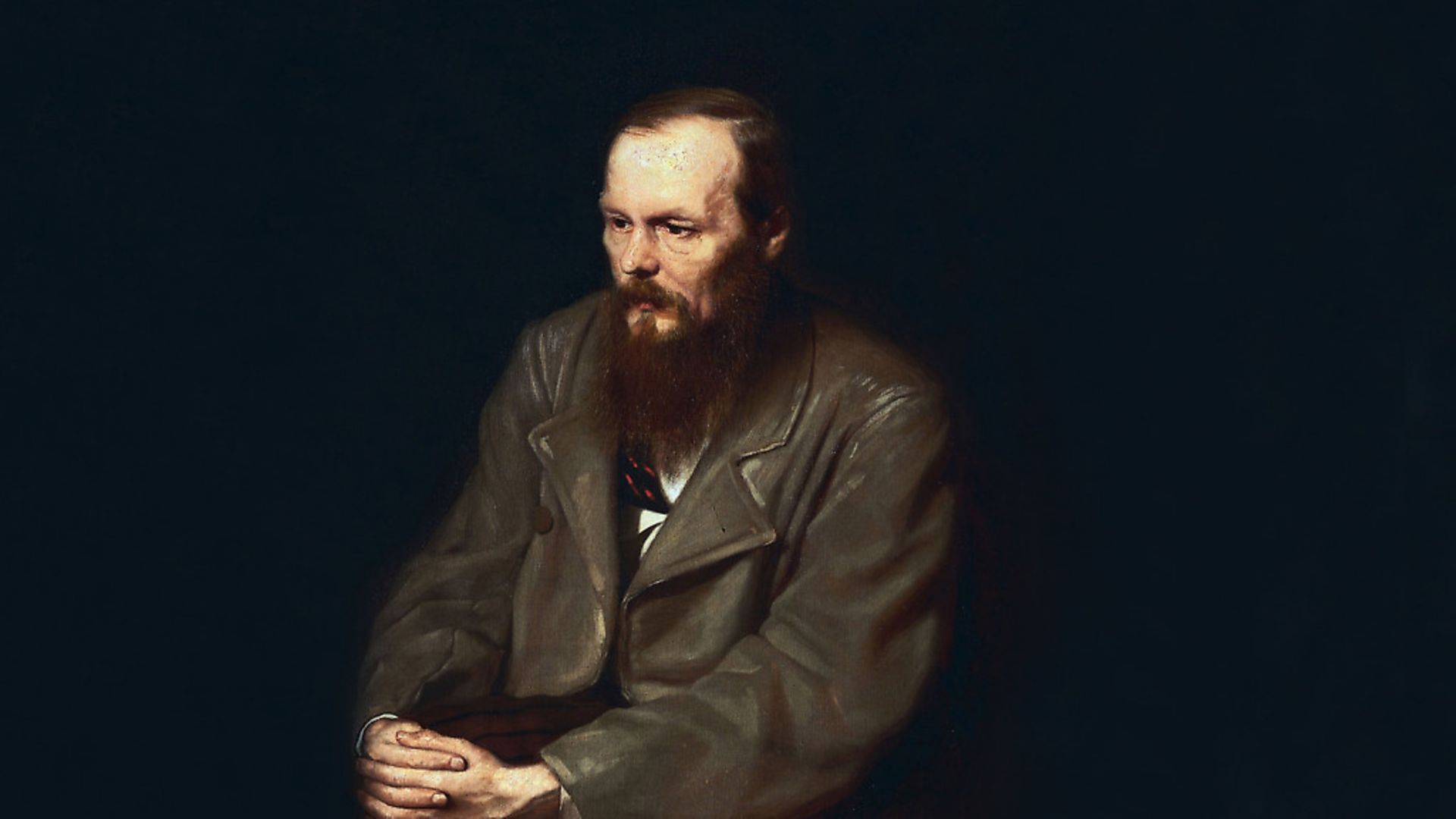As consultations with a medical practitioner go it was unusual, to say the least – but then Paris in the years leading up to the French Revolution was
an unusual place. During the early 1780s members of its high society, including Marie Antoinette herself, would flock to the Hotel Bullion on the
exclusive rue Coq-Heron in the hope that everything from minor ailments to
chronic health issues might be cured by a remarkable Austrian physician.
Patients were shown into a candlelit room lined with mirrors and heavy drapes decorated with astronomical symbols, the sweet smell of incense in
the air and the gentle sound of a glass harmonica tinkling from behind a
curtain. A circle of 20 chairs was placed around a large wooden tub with a brass lid from which a series of iron rods protruded, one in front of each patient. At a given signal the patient would be invited to place whichever part of their body was afflicted against one of the rods, then join hands with their neighbours.
At that point, a man would sweep into the room wearing a hooded lilac cloak and golden shoes. Circling the room a couple of times he would then pass his hands over some of his patients or flick a wand towards them, all the while regarding them with an intense stare as if he were seeing deep into their souls.
Reactions would vary. Some would vomit, others would be gripped by convulsions. Uncontrollable hysterical laughter would break out in some, while others would just start screaming.
Part séance, part group therapy, part social event, up to 200 people a day
would undergo this bizarre form of therapy devised and carried out by the
charming and bewitchingly charismatic Franz Mesmer.
“I dare to flatter myself that the discoveries I have made will push back the boundaries of our knowledge of physics as did the invention of microscopes and telescopes for the age preceding our own,” he said.
Big talk from a man whose medical theories and practices were shown to be
hokum not once but twice during his lifetime, forcing him to leave two of
Europe’s major capital cities in a hurry – but not before he’d made a fortune.
Mesmer’s practice was based on his unshakable belief that everything, from
human beings to the universe itself, was governed by an invisible magnetic fluid that ebbed and flowed tidally in relation to the movements of heavenly bodies.
As a student he had been a devotee of Isaac Newton, the first to recognise how the tides were in the power of the sun and moon, and who proposed “a certain most subtle Spirit, which pervades and lies hid in all gross bodies; by the force and action of which Spirit, the particles of bodies mutually attract one another at near distances, and cohere”.
Mesmer expanded on this idea in his doctoral thesis De planetarum influxu in
corpus humanum, “On the Influence of the Planets on the Human Body”,
submitted to the University of Vienna as part of his medical studies in 1766. On receiving his doctorate he parked his theories, married a wealthy widow 10 years his senior, went into general practice and became a patron of the
arts, one who in 1768 commissioned a one-act opera from a 12-year-old prodigy called Wolfgang Amadeus Mozart.
In 1774, intrigued by reports of the work of Hungarian astronomer Maximilian Hell who, it was claimed, could cure certain ailments with
strategically placed magnets, Mesmer returned to his theory that everything
was governed by the flow of an invisible magnetic fluid. Illness, he realised, was caused either by a shortage of fluid or a blockage preventing it from circulating properly. Hell’s magnets were creating the illusion of a tidal force, correcting issues with the flow and curing the patient. If this universal tidal fluid could be brought under the control of a qualified physician, he thought, it would revolutionise the practice of medicine.
He conducted his first experiment in what he termed “animal magnetism” on a Viennese woman named Francisca Österlin, who was suffering from
“constant vomiting, inflammation of the bowels, stoppage of urine, excruciating toothache, earache, melancholy, depression, delirium, fits of frenzy, catalepsy, fainting fits, blindness, breathlessness, and lameness”, conditions gathered under the collective umbrella “hysteria”.
Mesmer gave Österlin a preparation containing a quantity of iron filings and
placed magnets on various parts of her body. She drank the concoction, announced she was feeling much better and could sense washes of fluid moving through her body between the magnets. Indeed, she was, she said, cured.
Mesmer, never lacking in self-confidence at the best of times, decided that the crucial correcting influence was not the magnets after all but his own
personal animal magnetism. He must, he concluded, have more of the fluid in his own body than other people: the transfer of some of his surplus to patients by waving his hands over them would surely cure any ailment.
“There is only one illness,” he announced, “and only one cure.”
Yet if anything was working for Mesmer, it wasn’t the movement of invisible cosmic fluid. He was so convincing and his patients so desperate for a remedy that he met with some success among patients suffering from psychological disorders. Yet it wasn’t the power of his animal magnetism that was apparently curing some people. Thanks to his intense gaze and colossal personal charisma, Mesmer had harnessed not an invisible magnetic fluid but the power of suggestion.
A high-profile failure among plenty of other disgruntled patients began a shift of Viennese public and professional opinion against Mesmer. Noted concert pianist Maria Theresia von Paradis, blind since the age of three, claimed Mesmer had restored her sight but only when he was in the room. The chorus of criticism soon grew loud enough for the physician to leave Vienna – and his wife – for a fresh start in Paris.
He could barely keep up with the demand for consultations in the French capital so devised the baquet, the tub with protruding iron poles that allowed
him to host theatrical group sessions. The poles were connected to strong magnets at the base of a tub filled with iron filings and water magnetised
personally by Mesmer.
He kept up some individual clients, however, almost exclusively young women – including Marie Antoinette – whom he treated behind closed doors. This made husbands uneasy, to say the least, prompting the most prestigious husband of them all, Louis XVI, to appoint a Royal Commission led by the American ambassador Benjamin Franklin, who declared the medical benefits of the treatments to be zero.
Mesmer reacted to such official criticism in his now traditional manner – he did a bunk, leaving Paris for a few years touring Europe before settling in
Switzerland on the shores of Lake Constance, all the while unaware that he
had inadvertently invented hypnosis, used to treat a number of conditions to
this day. His fluid theories may have been wrong but, for a while at least, he
was convincing enough to keep a significant portion of the European elite
utterly mesmerised.




